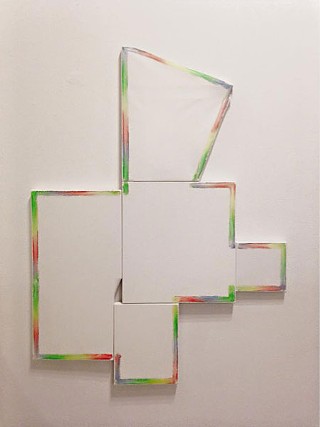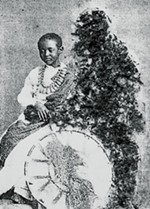"Unconscious Collective"
John Tennison's solo show lacks an editorial eye, and the exhibition suffers for it
Reviewed by Caitlin Greenwood, Fri., Jan. 30, 2015
ATM Gallery, 5305 Bolm #12
Through Feb. 5
ATM Gallery, located in the former Big Medium gallery space at Bolm Studios, is still very much in its infancy and exploring what its gallery ethos and curatorial style will be. Its first exhibitions have showcased the larger ATM collective's eight artists: Berkeley Beauchot, Caroline Eck, Dan Dalton, Wayne Moon Dean, Brittany Laurent, Sarah Nation, Rolando Sepulveda, and Nelson Smith. It would seem a perfect pairing to take the work of recent Texas State alum John Tennison – a collection that is very clearly still evolving – and bring it into this experimental space, a natural fit between two artistic forces looking to cement themselves in Austin's creative scene.
However, "Unconscious Collective" lacks an editorial eye, and the larger exhibition suffers for it. Tonally, Tennison's solo show strives to incorporate a dreamy embrace of one's future and transcend that destiny. The exhibition is composed of at least two distinct series of paintings and sculptures with incorporated affectations of paint, textiles, and other ephemera. One series of works depicts an angular, abstracted geometric figure with individual panels in varying colors: green, blue, etc. This series holds the show's larger pieces, which dot the gallery walls. It's also the series that looks least attended to. Design elements in each of the series' pieces appear rushed, with unfinished lines and sloppy transitions. In his artist statement, Tennison claims that "these new paintings are about arbitrary decision making," which may sound rather poetic, until the fruition of that statement creates work that feels both disjointed and intentionally haphazard.
Collections that carry the air of roughly hewn, incomplete work are successful when that unfinished quality helps propel a narrative. "Unconscious Collective" never communicates the direction in which it wants to move and subsequently splays all over the place. It will stand as a challenge for Tennison to more largely develop his ambitions, but this was also an opportunity for ATM collective leaders to establish how they want to curate and present work, an opportunity that was left on the table. "Unconscious Collective" shows two artistic identities with tremendous potential – Tennison's and the ATM Gallery's – but both would benefit from establishing their creative narrative now instead of making it up as they go along.













